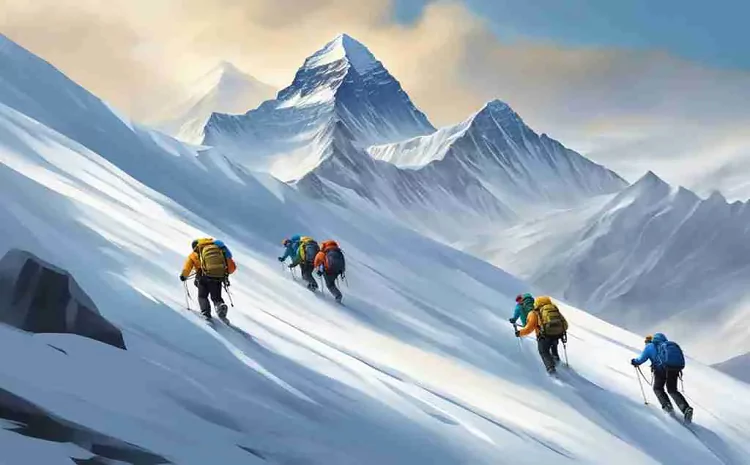Climbing Mount Everest is a dream for many adventure seekers, but it’s not just about the thrill of reaching the summit. One of the most common questions among climbers and enthusiasts is, “How long does it take to climb Mount Everest?” The answer isn’t straightforward. It depends on various factors like the chosen route, weather conditions, and climber’s experience. In this article, we’ll break down the entire process, giving you a clearer picture of what to expect when attempting to conquer this majestic peak.
Key Takeaways
- Climbing Everest typically takes around two to three months.
- The ascent involves two main phases: acclimatization and the summit push.
- Weather conditions and personal fitness levels greatly influence the time required.
Understanding the Climb
Climbing Season
Most climbers aim for the spring season (April to June) when the weather is relatively stable. This period is critical as it offers a window of opportunity for climbers to make their ascent.
Preparation Time
Before the actual climb, climbers often spend several weeks preparing, which includes gathering equipment, undergoing training, and acclimatizing to high altitudes.
Climbing Process
Base Camp Setup (About 2 weeks)
- Arrival at Base Camp: Climbers typically spend about two weeks at Base Camp (5,364 meters or 17,598 feet) to acclimatize to the altitude.
- Physical Conditioning: During this time, climbers engage in various activities, such as:
- Short hikes around the camp.
- Training sessions to build strength.
- Nutrition planning to ensure the body is ready for the climb.
Acclimatization (2-3 weeks)
After setting up Base Camp, climbers ascend to higher camps, gradually increasing altitude. This phase often takes around two to three weeks:
- Climbing to Camp I (6,065 meters or 19,900 feet): Climbers spend about 5-6 days reaching this camp.
- Return to Base Camp: They usually descend back to Base Camp to recover and adapt further.
- Repeat Process: Climbers repeat this ascent and descent to Camp II (6,400 meters or 21,000 feet) and beyond, further enhancing their acclimatization.
Summit Push (6-10 days)
Once acclimatized, climbers prepare for the final push to the summit:
- Moving to Higher Camps: This process can take about 6-10 days, depending on conditions.
- Camp III (7,200 meters or 23,622 feet): The climb to this camp is often challenging due to harsh weather.
- Camp IV (7,900 meters or 25,920 feet): From here, climbers prepare for the summit attempt.
- Summit Day: Typically planned when the weather forecast is favorable:
- Climbers usually start their ascent around midnight to reach the summit by morning.
- The entire summit day can take 12-14 hours or more, depending on conditions.
Factors Influencing Climbing Duration
Weather Conditions
- Unpredictable Weather: The weather in the Himalayas can change rapidly, impacting climbing schedules.
- Climbers need to be flexible with their plans to adapt to weather patterns.
Climber’s Experience
- Skill Level: Experienced climbers might move faster than novices.
- Physical Fitness: Those in better shape typically handle altitude and exertion more efficiently.
Team Dynamics
- Group Size: Climbing with a larger team can lead to longer waits at camps.
- Decision-Making: Effective communication and planning are vital for a smooth ascent.
Conclusion
In summary, climbing Mount Everest generally takes around two to three months. This includes preparation, acclimatization, and the actual summit attempt. The journey is physically and mentally demanding, requiring careful planning and an understanding of the environment.
So, if you’re considering this monumental challenge, remember to prepare thoroughly, respect the mountain, and be adaptable to the changing conditions.

